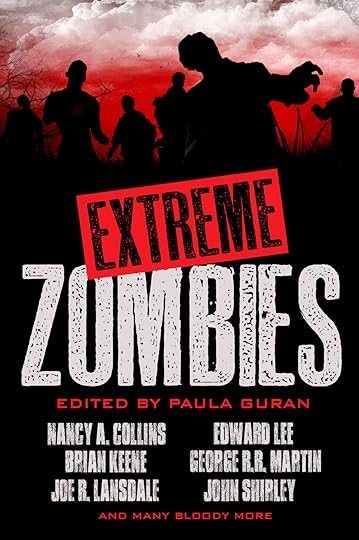Robin D. Laws's Blog, page 80
May 17, 2012
Consider That Stolen, Music Fan
 As one would hope and expect at an establishment where all the sandwiches are named after Wilco songs, the chat between counter guys and customers at Sky Blue Sky usually revolves around music.
As one would hope and expect at an establishment where all the sandwiches are named after Wilco songs, the chat between counter guys and customers at Sky Blue Sky usually revolves around music.
(Come to think of it, they may actually pay the guys who hang around passing the word on cool new bands. Like the performers who wander amusement parks dressed as cartoon animals.)
The other day, as I was waiting for my Kingpin, I overheard the following revelatory exchange.
Counter guy: You’ve never heard of Jack White?
Music fan: (shaking his head, but smiling) Nah, that’s not my real flavor.
“That’s not my real flavor.” It’s what you say when you want to indicate your lack affinity for something without dissing it. A friendly acknowledgment of taste’s essential subjectivity.
The complicated die mechanic in that story game? Not my real flavor.
I tried to watch that adaptation of the classic ghost story last night, but it was not my real flavor.
It carries the same meaning as “not my cup of tea” but without the aging pedigree, and the unspoken connotation of withheld condemnation.
Now, that saying, music fan, that is my real flavor. Thank you. And consider it stolen.
May 16, 2012
A WaRPed Character
 To celebrate-slash-publicize Atlas Games’ release of WaRP, the underlying rules system for the Over the Edge game, under an open license, here’s a character in the WaRP stats. If you sense the presence of the Cut-Ups Method in the concept, you just might be onto something... While the WaRP license doesn’t grant the right to publish material based on the Al Amarja setting, hey, this is a blog entry and I’m a friend of the family, as it were.
To celebrate-slash-publicize Atlas Games’ release of WaRP, the underlying rules system for the Over the Edge game, under an open license, here’s a character in the WaRP stats. If you sense the presence of the Cut-Ups Method in the concept, you just might be onto something... While the WaRP license doesn’t grant the right to publish material based on the Al Amarja setting, hey, this is a blog entry and I’m a friend of the family, as it were.
Jewel Broussard
Weirdly Normal Person
Ever since she first saw the cartoon character Tiffany Trilobite on television as a young child and sensed weird depths in her, Kipton, OH native Jewel Broussard has instinctively pursued the random and offbeat. Now twenty-nine years of age, working as a substitute teacher, she has lived her entire life in this small village, never suspecting that the mundane events of her workaday existence play out in exaggerated parallel on the mysterious island nation of Al Amarja. When she spoke up at a village meeting for an increase in the firefighting levy, a new crew of violent, privatized emergency workers, the Broussard Clarions, sprang up on the island. When she caught a fellow teacher stealing money from her school’s prom fund, the dean of D’Aubainne University was arrested and executed by the government.
A few days ago, a plane ticket to Al Amarja arrived in the mail. Though usually cautious, Jewel has chosen to go to this place she’s never heard of, in hopes of discovering why someone would have sent it to her.
Mirrored Existence Events of her dull but happy life in Ohio reflect or create dramatic outcomes on the island. What happens when she gets there? 2
Substitute Teacher Knows a little about everything, but mostly how to earn the cooperation of unruly groups. 3
Inspiring Speaker Confidence and innate goodness make those who listen to her want to do as she suggests.
Sweetly naïve (flaw)
Hit Points 14
[image error]May 15, 2012
The Birds: Dinosaur
May 14, 2012
I Have Combat Advantage, Therefore I Am
 Earlier I argued that an RPG resolution system can—and should—help convey the game’s emotional message.
Earlier I argued that an RPG resolution system can—and should—help convey the game’s emotional message.
This raises a question: can we look at existing systems and ascribe an emotional message to their various interactions of arithmetic and die rolls?
We have no reason to believe that Dave Arneson and Gary Gygax were thinking about this stuff when they codified the “to hit” rolls. Nor was it an issue when designers of later editions expanded it into D&D’s unified core resolution mechanic. But what does a d20 roll do, emotionally?
A d20 is very swingy, offering the biggest range of results possible in the standard polyhedral toolkit. Its raw result introduces a high degree of randomness. You use the rules, in which a +2 bonus is consider mathematically significant, to try to shape its fundamental unpredictability. Stacking up bonuses from magic, items, feats, skills and situational modifiers, you try to move the needle from succeeding about half the time to instead about a 66% chance of success.
In other words, you are incrementally assembling small advantages into one big advantage, in an attempt to impose order on chaos. Through a kitbag of step-by-step accumulation you strive to dampen life’s fundamental arbitrariness. Roll well, and rationality prevails. Roll poorly, and you are reminded that disorder can never be conquered, only forestalled.
Years ago I argued that D&D is a celebration of naked capitalism, red in tooth and glaive-guisarme. Can it at the same time be our foremost existentialist roleplaying game?
May 11, 2012
Flying Swords of Dragon Gate
 Tsui Hark’s latest wuxia flick, Flying Swords of Dragon Gate, is now available wherever you buy your Hong Kong video imports. (Remember, co-continentals: Asia and America share the same Blue Ray region.)
Tsui Hark’s latest wuxia flick, Flying Swords of Dragon Gate, is now available wherever you buy your Hong Kong video imports. (Remember, co-continentals: Asia and America share the same Blue Ray region.)
This sequel to the 1992 classic Dragon Inn serves up a study in contrasting eras of flying-people. The original is fast, energetic and sometimes technically crude. Flying Swords drips with mammoth production values, is Hark’s first foray into 3D, and relies as heavily on CGI-animated fu fighting as on wirework.
In plot embracing full convolution of its literary sources, Jet Li plays a eunuch-busting guerrilla who, after destroying the evil East Bureau, is hunted by the bad-ass prince of the even more evil West Bureau. Their paths take them to Dragon Inn, where the white meat in the noodles is people. Add a woman warrior disguised as him as an expression of unrequited love, a pregnant girl escaping the prince, and an assorted complement of treasure-hunting bandits, and you’ve got more story than you can shake a throwing dart at. And oh yes, there’s a gigantic sandstorm headed their way.
I wish this was as complete a return to form as Hark’s previous Detective Dee and the Mystery of the Phantom Flame. But here early reels that ought to be investing you in the characters instead spent time throwing computer-animated objects at the 3D camera. Would I sooner see Jet Li in his athletic prime, fighting a dude in widescreen with a locked-off camera? Yes, but that was nearly twenty years ago now. If you’re a fan, lesser Hark and Li are still Hark and Li.
The trailer prominently features the opening cameo from a corrupt eunuch Gordon Liu.
May 10, 2012
My Favorite Sendak Quote
 The late Maurice Sendak, who along with Theodore “Dr. Seuss” Geisel elevated the children’s book to high art, was often referred to as charmingly irascible. When people call you irascible with no further adjective, that’s usually a nice way of saying that you’re extraordinarily difficult but have somehow earned it. Charmingly irascible comes into play when your crankiness becomes entertaining—when you say the what we wish we had the cojones to say. Sendak wasn’t so much irascible as dead honest, and bracingly unconcerned with what you thought about that.
The late Maurice Sendak, who along with Theodore “Dr. Seuss” Geisel elevated the children’s book to high art, was often referred to as charmingly irascible. When people call you irascible with no further adjective, that’s usually a nice way of saying that you’re extraordinarily difficult but have somehow earned it. Charmingly irascible comes into play when your crankiness becomes entertaining—when you say the what we wish we had the cojones to say. Sendak wasn’t so much irascible as dead honest, and bracingly unconcerned with what you thought about that.
I’ve pointed it to again, but as we celebrate his life and work, here again is my all-time top statement of the governing ethos behind such classics as Where the Wild Things Are:
“I refuse to cater to the bullshit of innocence.”
We should all be so irascible.
May 9, 2012
The Birds: Online
May 8, 2012
Core Resolution and Emotional Dynamics
 How To Design Games the Robin Laws Way
How To Design Games the Robin Laws Way
(Part Six of Several; see part one for introduction and disclaimer)
With the core book outlined, it’s time to tackle the question of the game’s core resolution system.
(The reality isn’t so linear; thoughts about the book’s structure generally arise in parallel to ideas about the resolution system.)
If you’re designing a new game based on an existing core rules set, the choice is simple—let’s use that one. It might be dictated to you by the publisher, or a decision that you make as a designer. In the latter case, you'll obviously be constrained to the core rules sets available to you. Most likely, you’re working with a rules set by the same publisher. Or you might be using one available through a license, open or limited. We’ve already talked about the process of fitting a new game to an existing rules set; you’re presumably doing the Game X take on Y genre/setting.
If, however, I’m working from scratch, I want to design a core resolution system that creates the emotional dynamic implied by the core goal. Dying Earth, with its rolls and rerolls, evokes the comical back-and-forth of the source material. DramaSystem emulates the basic construction of dramatic scenes and otherwise gets out of the way. HeroQuest zooms out to a broader emulation of story construction, including the pass/fail cycle I later refined in Hamlet's Hit Points. GUMSHOE asks why it feels cool when heroes gather information in a mystery story, and brings that to the gaming table.
I never start out with a novel or abstractly intriguing mechanical idea and then try to build a game around that chassis. It starts with feeling. The mathematical construct is secondary; what the players are feeling when they use it is everything.
Recently I had the experience of switching from one core system owned by my publisher to the other. Before digging into the research for The Gaean Reach, I figured it would be Skulduggery-based, with bits of GUMSHOE sorted in. After reacquainting myself with Jack Vance’s delightful source material, I saw how the structure of its stories differed from the superficially similar Dying Earth tales the core rules were originally designed for. The SF novels played were more about investigation with the occasional setback than the constant picaresque reversals undergone by the likes of Cugel and Rhialto. So I shifted gears, to a GUMSHOE core with appropriate Skulduggery elements grafted on. Again this was a matter of creating the right feel, whether or not the crossover between the two systems introduces brand confusion.
May 7, 2012
Toronto-Area RPGer Sought For Thursday Night Playtest Group
 As happens from time to time, a slot has opened in up in my weekly Thursday night game group. We meet from 7-10 pm in the Annex area of downtown Toronto. The game of choice shifts depending on what I’m playtesting or familiarizing myself with at any given moment.
As happens from time to time, a slot has opened in up in my weekly Thursday night game group. We meet from 7-10 pm in the Annex area of downtown Toronto. The game of choice shifts depending on what I’m playtesting or familiarizing myself with at any given moment.
At present I’m running a follow-up playtest of my new DramaSystem game. This will not use the standard Hillfolk setting, but will instead follow the conflicts and desires of a traveling circus troupe in Depression-era America. The players have asked that their carnies have supernatural powers. (I asked the group what setting they wanted to play and they settled on an homage to Carnivale. This blatant act of premise appropriation is for in-house purposes only and not for publication, so rest easy, HBO legal department.)
Once I’ve given the post-playtest rules draft enough of a spin, we’ll move on to Dreamhounds of Paris, a Trail of Cthulhu campaign in which you portray the major figures of the surrealist movement, after they discover the capability of consciously reconfiguring Lovecraft’s dreamlands. Goodbye Dunsany pastiche, hello melting clocks.
If interested, please shoot me a message on whatever platform you’re seeing this on. Give me a quick sense of your RPG tastes and experience. We’ve had a ton of fun over the years and look forward to bringing in an enthusiastic new player whose time commitments allow for reliable attendance.
May 4, 2012
Extreme Zombies

 I’m pleased to announce that “Susan”, my story of undead unwholesomeness set during a queasy recovery from the zombie apocalypse, will be reprinted in Extreme Zombies, an anthology from Prime Books. Editor Paula Guran has packed its pages with impressive names, meaning that I’ll be sharing a masthead with such worthies as George R. R. Martin, Nancy A. Collins, and Joe R. Lansdale. Lest you conclude that only the middle initial users need apply, the book also makes gore-spattered room for Stone Skin Press contributors Jesse Bullington and Monica Valentinelli. Check out the full roster on the Prime Press site.
I’m pleased to announce that “Susan”, my story of undead unwholesomeness set during a queasy recovery from the zombie apocalypse, will be reprinted in Extreme Zombies, an anthology from Prime Books. Editor Paula Guran has packed its pages with impressive names, meaning that I’ll be sharing a masthead with such worthies as George R. R. Martin, Nancy A. Collins, and Joe R. Lansdale. Lest you conclude that only the middle initial users need apply, the book also makes gore-spattered room for Stone Skin Press contributors Jesse Bullington and Monica Valentinelli. Check out the full roster on the Prime Press site.





